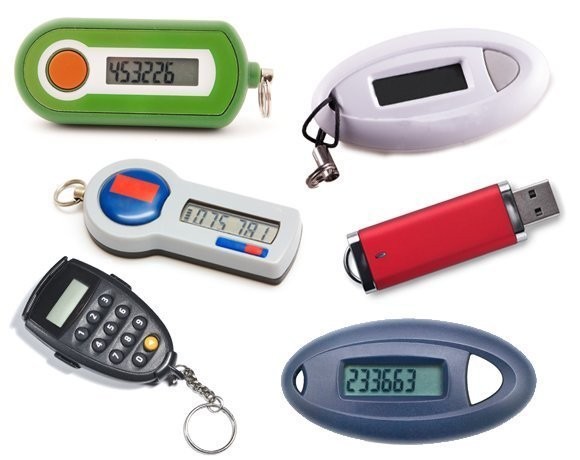The Electronic Key Fob has become an indispensable part of modern life, seamlessly integrating into our daily routines. From unlocking our cars remotely to securing access to buildings and digital systems, these small devices offer a blend of convenience and security that traditional keys simply cannot match. Often referred to as a hardware token or simply a key fob, the electronic key fob is a programmable device that provides on-device, one-factor authentication for keyless entry systems, granting access to physical objects, computer networks, and much more.
Unlike traditional mechanical keys, an electronic key fob eliminates the need for physical contact and manual unlocking. This remote-enabled access not only enhances convenience but also significantly improves security measures in various applications. Electronic key fobs belong to a broader category of physical security tokens, which also includes smart cards, proximity cards, and biometric keyless entry systems.
Decoding the Functionality of an Electronic Key Fob
At its core, an electronic key fob operates using radio-frequency identification (RFID) technology. Each fob is equipped with a short-range radio transmitter and an RFID tag chip embedded with a unique antenna. This sophisticated yet compact design allows the fob to communicate wirelessly with a receiver unit integrated into the device or system it is designed to access.
When a user presses a button on the electronic key fob, it initiates the transmission of a distinct, coded radio signal. This signal, broadcast at a specific radio frequency, is intercepted by the receiver unit. The receiver unit, in turn, contains its own RFID tag storing pre-programmed information. An instantaneous communication exchange occurs as the receiver’s transmitter sends a signal to the fob, prompting the fob to adjust to the transmitter’s frequency.
The critical aspect of this interaction lies in the RFID chip within the key fob. This chip is programmed to transmit specific RFID tag information that must precisely match the information the receiver device is programmed to accept. This ensures that only authorized key fobs can activate the intended function.
Consider the example of a car’s electronic key fob. A fob programmed for a specific vehicle will exclusively lock and unlock that car. No other key fob, even of the same make and model, will function with that particular vehicle unless it is properly programmed and paired. The system verifies the information exchanged between the fob and the receiver. If the information from the receiver tag matches the information requested by the fob, the action, such as locking or unlocking, is executed. Conversely, a mismatch in information will prevent the function from being performed, maintaining security and preventing unauthorized access.
Modern electronic key fobs, especially those used in automotive applications, are often designed with multiple functionalities. Beyond the basic lock and unlock commands, automotive key fobs can include a range of features assigned to different buttons. These advanced functions can include:
- Remote ignition start, allowing users to start their vehicle from a distance.
- Activation and deactivation of car security systems, providing enhanced vehicle protection.
- Remote trunk release, offering convenient access to the vehicle’s cargo space.
- Control of automatic windows, enabling users to operate windows remotely for ventilation or convenience.
Electronic Key Fobs as a Component of Multifactor Authentication
Beyond simple access control, electronic key fobs play a vital role in bolstering security through two-factor (2FA) and multifactor authentication (MFA) systems. These authentication methods are increasingly crucial for safeguarding sensitive data and networks in today’s digital landscape. Unlike traditional password-based security, MFA necessitates the use of multiple authentication factors to verify a user’s identity before granting access to networks, devices, applications, or data. These factors fall into three categories:
- Possession: Something the user has, such as an electronic key fob.
- Inherence: Something the user is, like biometric characteristics (fingerprint, facial recognition).
- Knowledge: Something the user knows, such as a password or PIN.
By combining these factors, MFA significantly enhances security, making it considerably more challenging for malicious actors to compromise credentials and gain unauthorized access. This layered approach provides a much more robust defense against cyber threats compared to relying solely on passwords.
In a typical 2FA or MFA setup using an electronic key fob, the process begins with the user entering a personal identification code or password to initiate login. The key fob then generates a pseudo-random token code, often referred to as a passcode or one-time password (OTP). This passcode acts as a validation credential, confirming the user’s legitimacy and authorization to access the system or network. Upon successful validation, access is granted.
A critical security feature of these passcodes is their time-sensitive nature. Each generated passcode is valid for a limited duration, typically between 30 to 60 seconds. If the user fails to input the passcode within this timeframe, it automatically expires and becomes unusable. To gain access after expiration, the user must regenerate a new passcode using their electronic key fob, ensuring that intercepted passcodes are rendered useless to potential attackers.
Integrating Biometrics with Electronic Key Fobs for Advanced Security
To further amplify security, biometric authentication is increasingly being integrated with electronic key fobs. Biometric authentication leverages unique biological traits, such as fingerprints, iris scans, or voice patterns, to verify identity. As an inherence factor in MFA, biometrics adds another layer of robust security when incorporated into electronic key fobs.
Some biometric key fobs employ traditional fingerprint scanning technology, requiring users to place their finger on a sensor. Others utilize a swipe method, where users swipe their finger across a sensor on the fob. These methods are designed to read the intricate details of the fingerprint, including the ridges and even the seven layers of skin on the finger pad, ensuring a highly accurate and secure method of user authentication. This integration of biometrics into electronic key fobs represents a significant advancement in access control and security technology.
The Undeniable Benefits of Electronic Key Fobs
One of the paramount advantages of electronic key fobs, particularly in enterprise environments, is the enhanced layer of security they provide. Traditional passwords, while common, are susceptible to interception and theft through various cyberattacks, including brute-force attacks, phishing campaigns, and social engineering tactics.
These vulnerabilities can allow malicious actors to infiltrate networks or systems, leading to severe consequences such as malware installation, ransomware attacks, data theft, identity fraud, espionage, and a host of other cybercrimes.
Electronic key fobs effectively mitigate these risks. Even if cybercriminals manage to compromise passwords, they still require physical access to the key fob to gain entry. While it is theoretically possible to copy or hack key fobs, the practical likelihood of a successful cyberattack is significantly reduced if users exercise caution in safeguarding their devices. The need for physical possession of the fob adds a substantial barrier against remote attackers.
Furthermore, the randomly generated, time-sensitive passcodes transmitted by electronic key fobs provide an additional layer of defense. Each passcode is unique and valid for a single use within a short timeframe. This mechanism renders intercepted passcodes useless to attackers, preventing replay attacks and enhancing overall security. Beyond security, electronic key fobs are designed with user-friendliness in mind, offering a simple and intuitive interface that minimizes user friction and ensures ease of use.
In sophisticated enterprise setups, back-end software can manage and control numerous connected RFID readers from a central server. This centralized system enables administrators to remotely program and manage multiple electronic key fobs. The server facilitates communication with both fobs and readers, granting or denying user access based on pre-configured permissions and real-time authentication.
Moreover, administrators can establish multilevel access control, precisely defining who can access specific areas within a network, facility, or device ecosystem. This granular level of control is particularly advantageous for organizations requiring stringent security and access management, eliminating the logistical complexities and costs associated with traditional lock and key systems.
The versatility and robust security features of electronic key fobs make them ideally suited for a wide array of commercial applications, including:
- Manufacturing facilities and factories
- Corporate offices and business complexes
- Restricted zones, such as server rooms and data centers
- Research and development laboratories
- Healthcare facilities and hospitals
In conclusion, the electronic key fob has revolutionized access control and security across various sectors. Its blend of convenience, enhanced security features, and adaptability positions it as a cornerstone technology in our increasingly interconnected world. As technology continues to advance, the electronic key fob is poised to remain a vital tool for secure and efficient access management in both physical and digital realms.

